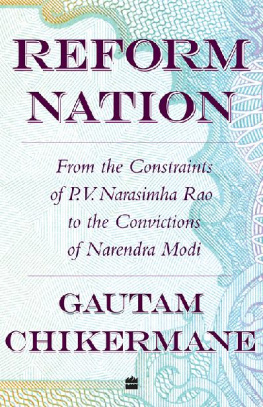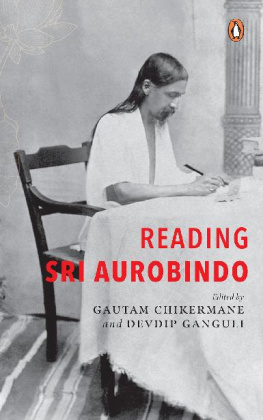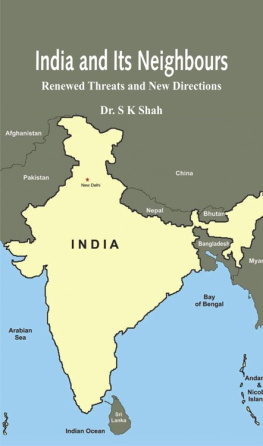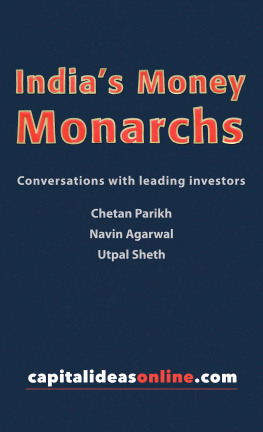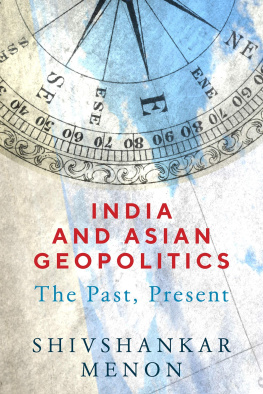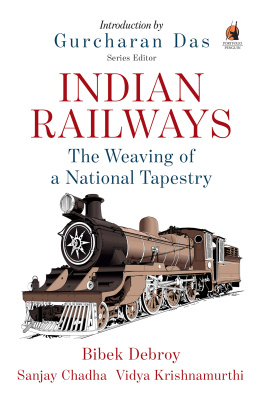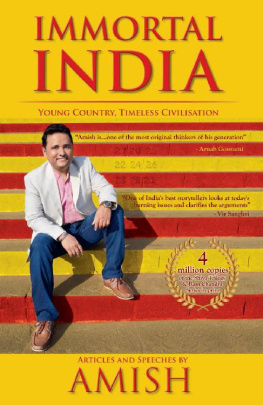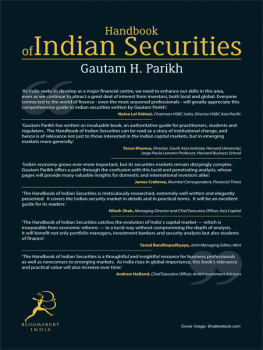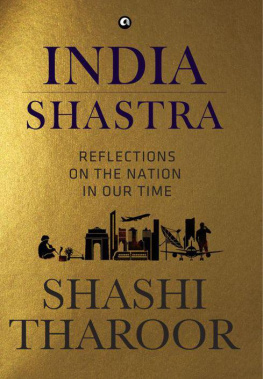GAUTAM CHIKERMANE
INDIA 2030
The Rise of a Rajasic Nation
Contents
Advance Praise for India 2030
Indias advances will be keenly watched in the 2020s. The upcoming decade will be about India showcasing economic prowess in various fields and the quest to become Aatmanirbhar or self-reliant, a vision that aims to be a force multiplier for the world economy. Indias human-centric approach to development, expression of peace and aspirations of prosperity will play a key role in furthering global goodPrime Minister Narendra Modi
To my parents, Lakshmi Chikermane and (late) Suresh Chikermane
Preface
This book is a ten-year time compression. It captures the India of 2030 and hands it to us today. It walks a decade-long journey, with all its major and minor trails, and tells us what India at 2030 will look like. This is not a prescriptive bookit does not tell us what to do or how to get there. This is a predictive bookit tells us what will happen. In terms of language, the thrust is on will rather than should. It is a definitive envisioning of the future.
There are twenty forecasts in this book by twenty thought leaders on twenty themes that will impact and influence India through the 2020s. All the experts have put their decades of experience and mountains of knowledge together to study the past, evaluate the present and predict the future. I look at all of them as intellectual excavators of Indias next decade. They have not only defined the destinations India would reach in 2030, they have described the routes India will take to get there.
This book delves into the world of ideas. It may look like a pragmatic guide to help citizens negotiate the twenty theme landscapes through the 2020sand it is. It could read like a travel guide to the futurewhich it also is. It might come across as a collection of essays that helps us wade through several layers of unfolding time and numerously nuanced dimensions of Indiayes, thats correct too. But underlining all these practical expressions are the foundations of complex and interrelated engagements of thoughts and actions that together paint a big picture, individually and collectively, of India.
Interested citizens will find in this collection of ideas a road map with which to engage with the coming decade. This book will prepare them, hand over the tools of what to expect, remove the surprises and help them ride the next ten years with better preparedness. Ideas define actions, more so in the twenty-first century than ever before, and with a greater intensity in a fast-changing nation like India. Look at the evolving contours of education and demographics on jobs, for instance.
Simultaneously, those engaging with knowledgeits creation, its analysis and its applicationand hence having a deep understanding of its various layers, will be able to place their patterns within a wider perspective, both within the confines of their fields as well as in related, interdisciplinary influences. Each will impact and power the other. And when all the chapters, issues and ideas in this book are read together, they will offer an integral understanding of where India is headed over the next ten years. The impact of economics on foreign policy or of policymaking on science, and both contextualized within a civilizational perspective, for instance.
Every decade since Indias Independence has carried its own texture of aspirations, expectations and exasperations. The 1950s gave us the first whiff of freedom; the 1960s got us to embrace socialism; the 1970s turned tyrannical; the 1980s began to open up the economy; the 1990s pushed open the door wider; the 2000s introduced a digital world; the 2010s created a knowledge society around it. As the next decade, the 2020s, begins from 1 January 2021, India stands at a crossroads of several simultaneous disruptions.
From two aggressive neighboursauthoritarian China and Islamist Pakistanthat refuse to embrace peace, to new formations and alignments such as the Quad of the US, Japan, Australia and India to counter Beijing, the 2020s will shape a new regional order. Jobs and prosperity cannot come without the accompanying reforms; the recent labour and farm reforms are a positivedisruptive start. The new education policy, again, will disrupt the sector, make it more flexible, student-focused and in tune with Indias twenty-first-century knowledge aspirations. The disruption in defence procurement and production will make weaponry more effective. It is not merely the Union governments that will drive reforms; state governments will add their bits.
Not all disruptions of the 2020s will be government-led, however. Several sectors will be driven by private actors, for-profits as well as not-for-profits, and will contribute to the flowering of India. Technology, for instance, is changing and will continue to inform the way underlying conversations of India will happen, from identity and financial technologies to vaccines and ventilators. The size and scale of firms will increase: there will be more companies employing 500-plus workers than the 3 per cent that do today. The scale and size of individual transactions will rise exponentially: Indias per capita digital transactions that increased from 2.4 per annum in 2014 to 22 in 2019, are expected to grow to 220 by 2021, a ten-fold increase in just three years. The positive disruption from urbanization will ensure that the share of labour engaged in agriculture falls from 48 per cent to 30 per cent by 2030 and the overall country productivity rises through new market alignments and greater flexibility given to farmers recently.
The real heroes of this book are the contributors. Each of them stands atop a field, each is a living institution of knowledge streams. To imagine that all of them, without exception, agreed to join this ambitious project without batting an eye, or raising a question, is something I am deeply grateful for. Perhaps its the relationship, some of which are more than two decades old. Perhaps its the impossibility of this project; its far more challenging to predict than to prescribe. My sense is that both these reasons may have played their part. But the third and most important reason is the generosity of these wise women and men, a generosity that belongs to those who understand their field in its entiretyintellectually and experientiallyand hence engage integrally with humility and large-heartedness.
A final para on the intellectual inspiration behind this book. In a January 2020 lecture by Bibek Debroy at the India Habitat Centre, he mentioned how, following a life-changing event in 2004, from which he was lucky to have emerged out alive, he decided to publish twelve books that year and opt out of the rat race. He ended up publishing fifteen books (authored and edited). Bibek has never looked back since. His current score stands at 112 books (sixty-five authored and forty-seven edited). With four books behind me, I had not even imagined, leave alone attempted, an intellectual adventure so vast. And so, this economist and master translator of Indian scriptures guided me more by example than by his wide-ranging intellectual prowess. As his words hit home that evening, they ignited several journeys. The first of those intellectual voyages is in your hands. The rest, I hope, will follow over the years. Thanks, Bibek.
Now, over to you, dear readersthe adventure of the 2020s begins here.
New Delhi
Gautam Chikermane
December 2020



